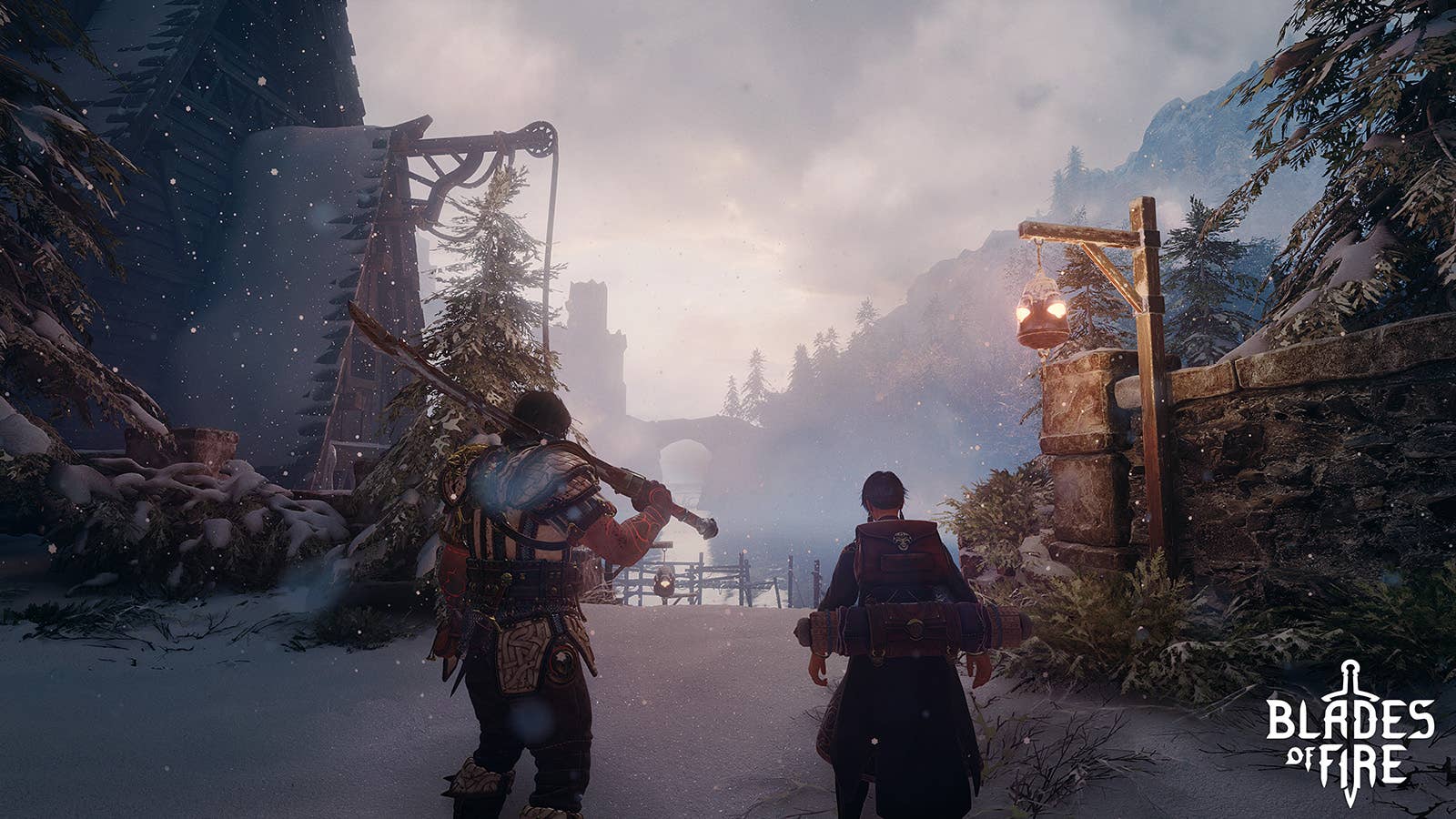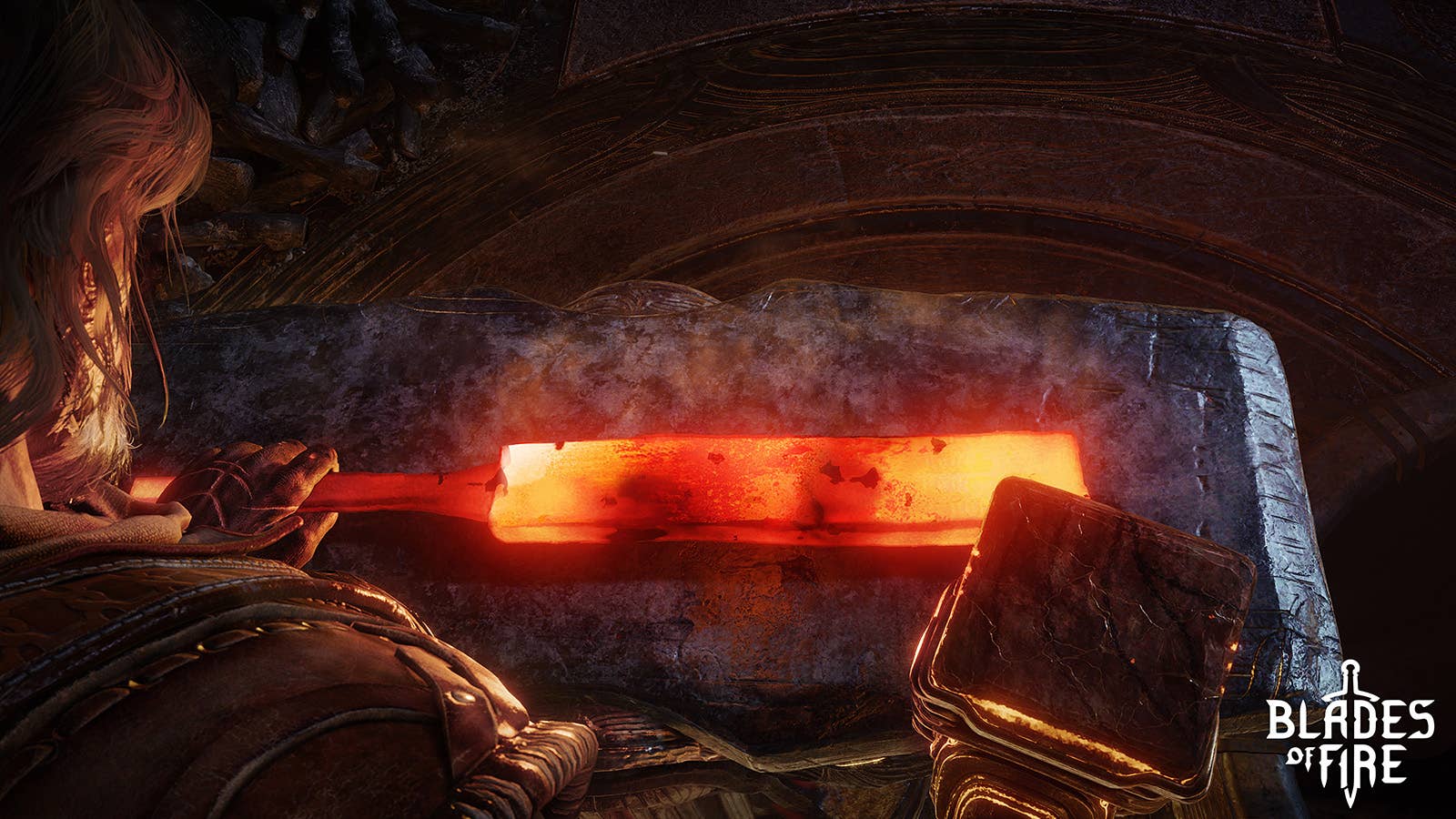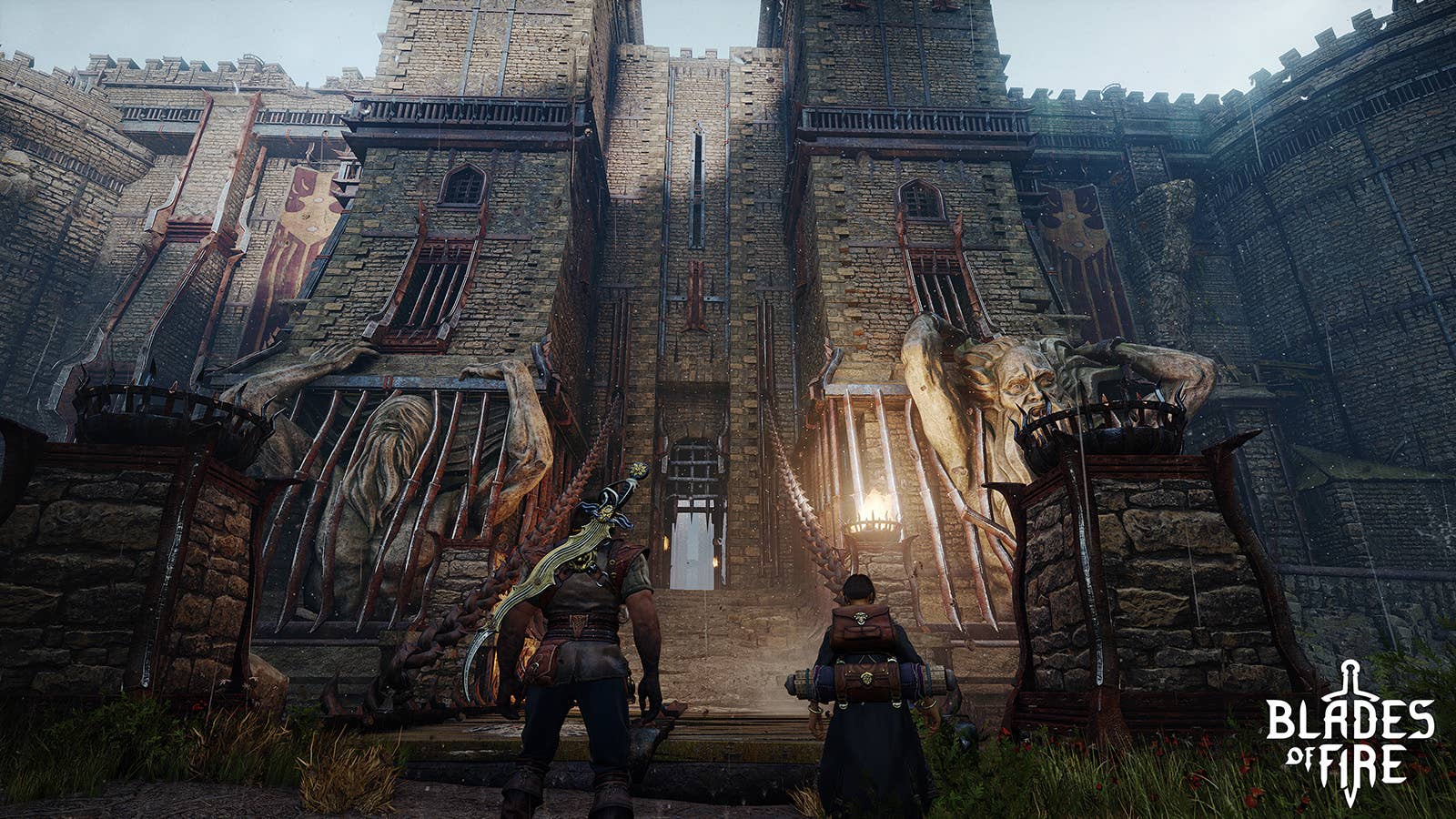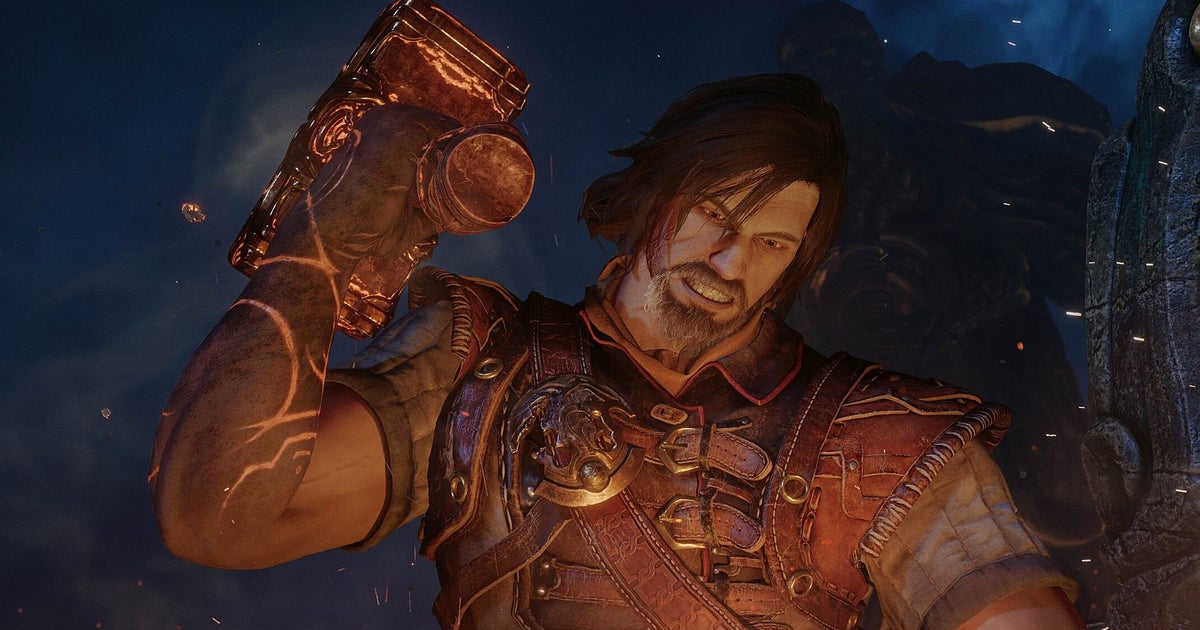Blades of Fire manages to feel original, lovable, and born of genuine passion, despite the near overwhelming number of problems that could have extinguished it.
Ever feel like you’re not where you should be? I had that feeling once. It was midnight on Halloween, on a deserted market street in Croydon. I looked up the street and froze as I saw a clown carrying a knife. My initial reaction was to stare and think, the confusion taking over the rational part of my brain that would have told me to move away from the clown as quickly as possible. Is that a real knife? Why is the clown just standing there? Do I go back down an even darker path to my flat or push on into a more central part of town? I was clueless, a bit scared, and desperate for someone to just provide some assistance. None came, so when the heir to Pennywise approached me I jogged up some steps into a throng of nightlife, and things just sort of worked out. I don’t know if the clown was up to no good or not (it was Halloween after all), but I often think about that moment and the feeling of simply not knowing what to do. I rarely knew what to do while starting out in Blades of Fire, and that was a big problem until I let myself get swept away by the adventure.
There’s nothing outwardly exciting about Blades of Fire, MercurySteam’s (Castlevania: Lords of Shadow, Metroid Dread) return to the “big muscular man fights through seemingly endless enemies across a large world” genre (that man being Aran, in this instance, and in a clear nod to Samus). Yes, this has soulslike leanings, without going full hog (die and you’ll lose your equipped weapon and be sent back to the last blacksmith’s anvil you used, the weapon left where you perished). It has a messy but encouraging-enough story, centred on a man who is sort of a magical blacksmith who forges weapons under the gaze of a demon/god-like creature inside another realm and must defeat the queen who has cast a spell turning steel into stone. And it’s full of all the different tiers of boss fights you would expect. But when you play it, Blades of Fire feels different, and I find that pretty exciting. Outside of a small amount of tutorialisation you’re pretty much just thrown in and told to figure stuff out – which caused some headaches.
My immediate reaction to the difficulty I had in the game’s first real area was one of confusion, with a bit of anger and a whole lot of wondering what I’d chosen to put myself through. What the hell does this game want me to do and where does it want me to go? Many hours later, as someone who now considers themselves a Blades of Fire fan – you could say a Blades of Fire apologist – I still can’t properly answer that question. I think MercurySteam simply wants you to go on a journey and take things as they come.

Blades of Fire is a game that doesn’t reward the button-masher. You’ll need to use the right weapon and attack style to take on each enemy, with an outline highlighting which of four body parts (corresponding to the four console controller face buttons) can be damaged or cause your strikes to be repelled by armour. Stamina plays its part, so you’ll want to recharge by adopting a defensive position, and you’ll need to be careful you’re not overrun as even weaker foes can do damage as a group if you let yourself get cornered. A health flask fills a portion of your health bar, but you’re limited to a set number of uses until you rest, at which point it refills but a lot of the enemies you’ve defeated return to the land. There’s that soulslike influence creeping in again.
Things here in Aran’s steel-obsessed world begin tough and get even tougher as you discover new areas and tackle the enemies within. It’s incredibly easy to get swamped and die, knocked over a cliff edge and die, walk back over a cliff edge and die, be burnt alive and die, or forget that the sword you are carrying doesn’t have the special blue magic imbued into it (that sword got left on a cliff edge) and you therefore can’t fight the floating blue swords so you die. Not helping is the control scheme, which while perfectly acceptable on the face of it, has led me to pressing the wrong buttons over and over again. It seems my brain has been semi-hard-wired to attack in a certain way, and it takes some time at the start of each new session with Blades of Fire to get into the swing of things.
If you’ve seen any of the marketing for Blades of Fire you’ll know that forging weapons is one of the game’s bulletpoints, no doubt on a marketing brief somewhere. You don’t pick up weapons. Instead you have to cherry-pick what type of steel to use (which dictates if your weapon excels in certain areas, such as its ability to slice through enemies or be effective when blocking), choose the shape of the blade, decide on the size of the hilt, then hammer a flaming hot lump of steel on an anvil to knock it into shape. I’ll be honest, I very much dislike this mechanic and find it tedious in the extreme. It plays into the story, but it’s not fun, with every hammer strike causing some bars (which represent how closely the steel matches the shape of the blueprint) to go up and down – get the bars as close as possible to the design and you’ll end up with a high quality forging. By all means let me fine-tune my weapon’s stats, but don’t make me play a dull mini-game at the end of it. What’s worse, how well you hammer the weapon into shape dictates the number of repairs you can give it (yes, your weapons degrade as they are used) before it needs to be recycled for resources. You can reuse previous quality levels you’ve reached for the type of weapon you’re forging, but going to the forge always irked me, which is a shame given its prominence in the whole experience.

I’ve not been all that complimentary of Blades of Fire so far, so why stop now? I promise I’ve got good things to say soon! If I’ve ever played a game with a more useless map or with more confusing location design I must have blanked it from memory for my own good. I might not be as sharp as I used to be, but I’ve played an awful lot of games in my 42 years on this planet. So when I sat shaking my head at yet another time the way forward in Blades of Fire turned out to require the most obtuse bit of world navigation imaginable you can be rest assured that I know what I’m talking about.
This is partly a problem brought about by the map, which isn’t clear about what areas you have explored already. It’s partly down to there optionally being an objective marker on the map, but the game often requires you to jump through hoops and navigate maze-like buildings to reach it. And it’s partly because you can’t jump or climb ledges (unless the game gives you a prompt to), so the world feels oddly enclosed at points, despite also being confusingly vast. It sounds like a nightmare, right? No amount of lore or advice offered by Aran’s sidekick, Adso, helped overcome these moments of frustration. It would have made little sense in the game’s world, but some floorplans covering multiple storeys of buildings would have been very welcome.
And yet. I find myself thinking fondly of Blades of Fire, and throughout the review process I became keener and keener to return to it as I progressed deeper. The game’s many problems don’t go away as such, but after I’d put five or so hours in and understood what this game was I was able to play it on its own terms, as opposed to how I wanted to play it. While the combat takes some brain rewiring, and dislikers of degrading weapons will want to stay away, I grew to get a real kick out of successfully taking on a group of foes who had previously bettered me, whether it was through a better defence (a successful parry gives you a sort of turbo stamina, allowing you to perform a flurry of attacks), careful use of a spear to keep enemies at a distance, or superbly timed rolls to get behind your targets. There’s a real weight and chunkiness to the fighting in Blades of Fire if you go with the bigger weapons, but smaller, sometimes dual-wielded blades let you show off Aran’s more nimble side. A lot of games attempt to make a big point about how you can play to your own style, when they really mean you can use a sword or an axe. Blades of Fire really does this while at the same time managing to encourage you to try out different weapons you might have ignored. It’s great.

There is a lot to do in Blades of Fire. I’ve stumbled across plenty of bits and pieces to know enough about how much ‘extra’ things there are to do that aren’t tied to the main storyline, and it’s a nice big chunk. Part of what I love/hate about the world design here is that there are paths leading off all over the place, sometimes to where you’re meant to be going, but other times to a hidden item – perhaps one that will increase your healing abilities, maybe one to give you a higher quality to reach in the Forge, and occasionally something else. This game lights a fire under me that I can’t seem to extinguish, no matter how bad things get – I say this having shouted swear words at the screen more times than I’d like to admit. I was playing one evening, nearing what I thought might be the game’s conclusion, and I noticed I’d shuffled forward and leant towards the TV, my whole body invested in the events unfolding. Reader, it wasn’t the conclusion – this game is large! Wonderfully and unexpectedly so.
I’m a sucker for a game with grand ambitions and scope beyond what might seem sensible. With all those twisting paths and secrets, Blades of Fire delivers a real sense of adventure and discovery. Your companions (permanent and temporary) are likable and quippy enough without being annoying (if prone to repeating lines a little too often), and the overly buff main character and the equally hench enemies and NPCs tap into my nostalgia for that Xbox 360/PS3 era when it seemed everyone was stacked. The real high-point for me, though, is Blade of Fire’s fantasy setting, a gloriously grandiose world full of ancient dilapidated buildings, lush landscapes, and secret paths that could only be in a video game – it has a look that I can only describe as what people probably expected games to look like now when they were playing on the PS2 25 years ago. I love it. This is a game world I really enjoy being in, despite the plethora of quite large problems I’ve detailed above. It got its hooks in and that was it. No doubt those hooks wouldn’t have caused quite so much pain had the whole experience been smoother, but there’s certainly an argument for some of that frustration building a tighter bond.
I know you can get this sense of adventure from the best soulslikes out there – people do tell me Elden Ring (heard of it?) is wonderful in this respect – but the key point here is that I haven’t been able to gel with any of those. For whatever reason, quite possibly because Blades of Fire didn’t go full souls, I got sucked in. This is a game with a list of problems that far outweigh the good, especially in the initial few hours as you get to grips with exactly what is being asked of you. If reviewing games was as simple as making diametrically opposite lists to see which side comes out on top, it’d be hard to see MercurySteam’s fantasy epic as anything other than a failure. But it’s not so simple. Blades of Fire has a soul, an identity – a bristly, prickly, and ultimately singular one that requires you to come at it the right way – and a fantastical sense of place that means I’m willing to overlook its unsharpened edges. Maybe I was the clown all along, and I did get that push I needed to just see where things go.
A copy of Blades of Fire was provided for review by 505 Games.
